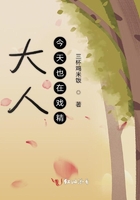Miscellaneous Remarks on the country.On its vegetable productions.
On its climate.On its animal productions.On its natives,etc.
The journals contained in the body of this publication,illustrated by the map which accompanies it (unfortunately,there is no map accompanying this etext),are,I conceive,so deive of every part of the country known to us,that little remains to be added beyond a few general observations.
The first impression made on a stranger is certainly favourable.
He sees gently swelling hills connected by vales which possess every beauty that verdure of trees,and form,simply considered in itself,can produce;
But he looks in vain for those murmuring rills and refreshing springs which fructify and embellish more happy lands.Nothing like those tributary streams which feed rivers in other countries are here seen;for when I speak of the stream at Sydney,I mean only the drain of a morass;
And the river at Rose Hill is a creek of the harbour,which above high water mark would not in England be called even a brook.Whence the Hawkesbury,the only fresh water river known to exist in the country,derives its supplies,would puzzle a transient observer.He sees nothing but torpid unmeaning ponds (often stagnant and always still,unless agitated by heavy rains)which communicate with it.Doubtless the springs which arise in Carmarthen mountains may be said to constitute its source.
To cultivate its banks within many miles of the bed of the stream (except on some elevated detached spots)will be found impracticable,unless some method be devised of erecting a mound,sufficient to repel the encroachments of a torrent which sometimes rises fifty feet above its ordinary level,inundating the surrounding country in every direction.
The country between the Hawkesbury and Rose Hill is that which I have hitherto spoken of.When the river is crossed,this prospect soon gives place to a very different one.The green vales and moderate hills disappear at the distance of about three miles from the river side,and from Knight Hill,and Mount Twiss,the limits which terminate our researches,nothing but precipices,wilds and deserts,are to be seen.Even these steeps fail to produce streams.The difficulty of penetrating this country,joined to the dread of a sudden rise of the Hawkesbury,forbidding all return,has hitherto prevented our reaching Carmarthen mountains.
[Look at the Map.(There is no map accompanying this etext)]
Let the reader now cast his eye on the relative situation of Port Jackson.
He will see it cut off from communication with the northward by Broken Bay,and with the southward by Botany Bay;and what is worse,the whole space of intervening country yet explored,(except a narrow strip called the Kangaroo Ground)in both directions,is so bad as to preclude cultivation.
The course of the Hawkesbury will next attract his attention.
To the southward of every part of Botany Bay we have traced this river;
but how much farther in that line it extends we know not.Hence its channel takes a northerly direction,and finishes its course in Broken Bay,running at the back of Port Jackson in such a manner as to form the latter into a peninsula.
The principal question then remaining is,what is the distance between the head of Botany Bay and the part of the Hawkesbury nearest to it?
And is the intermediate country a good one,or does it lead to one which appearances indicate to be good?To future adventurers who shall meet with more encouragement to persevere and discover than I and my fellow wanderer[s]did,I resign the answer.In the meantime the reader is desired to look at the remarks on the map (there is no map accompanying this etext),which were made in the beginning of August 1790,from Pyramid Hill,which bounded our progress on the southern expedition;when,and when only,this part of the country has been seen.
It then follows that from Rose Hill to within such a distance of the Hawkesbury as is protected from its inundations,is the only tract of land we yet know of,in which cultivation can be carried on for many years to come.To aim at forming a computation of the distance of time,of the labour and of the expense,which would attend forming distinct convict settlements,beyond the bounds I have delineated;
or of the difficulty which would attend a system of communication between such establishments and Port Jackson,is not intended here.
Until that period shall arrive,the progress of cultivation,when it shall have once passed Prospect Hill,will probably steal along to the southward,in preference to the northward,from the superior nature of the country in that direction,as the remarks inserted in the map will testify.
Such is my statement of a plan which I deem inevitably entailed on the settlement at Port Jackson.In sketching this outline of it let it not be objected that I suppose the reader as well acquainted with the respective names and boundaries of the country as long residence and unwearied journeying among them,have made the author.To have subjoined perpetual explanations would have been tedious and disgusting.Familiarity with the relative positions of a country can neither be imparted,or acquired,but by constant recurrence to geographic delineations.
On the policy of settling,with convicts only,a country at once so remote and extensive,I shall offer no remarks.Whenever I have heard this question agitated,since my return to England,the cry of,"What can we do with them!
Where else can they be sent!"has always silenced me.
Of the soil,opinions have not differed widely.A spot eminently fruitful has never been discovered.That there are many spots cursed with everlasting and unconquerable sterility no one who has seen the country will deny.















